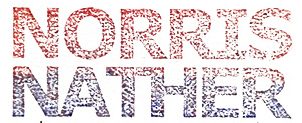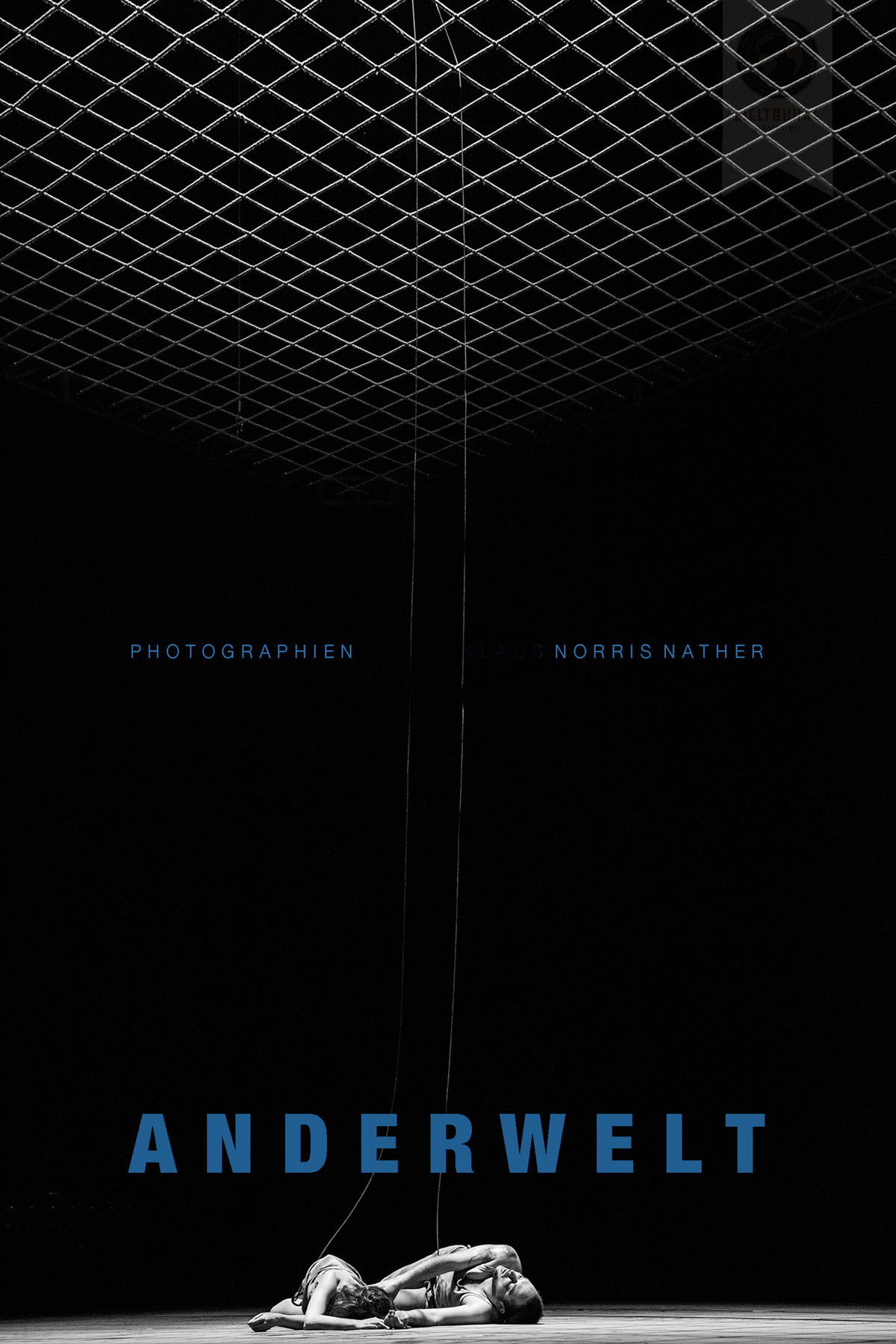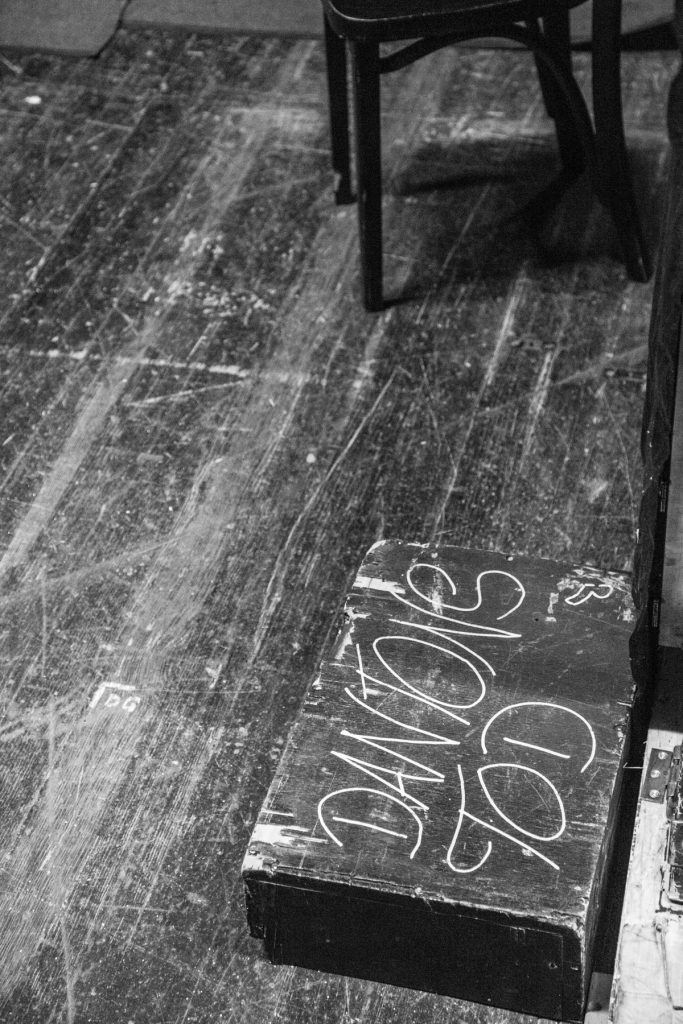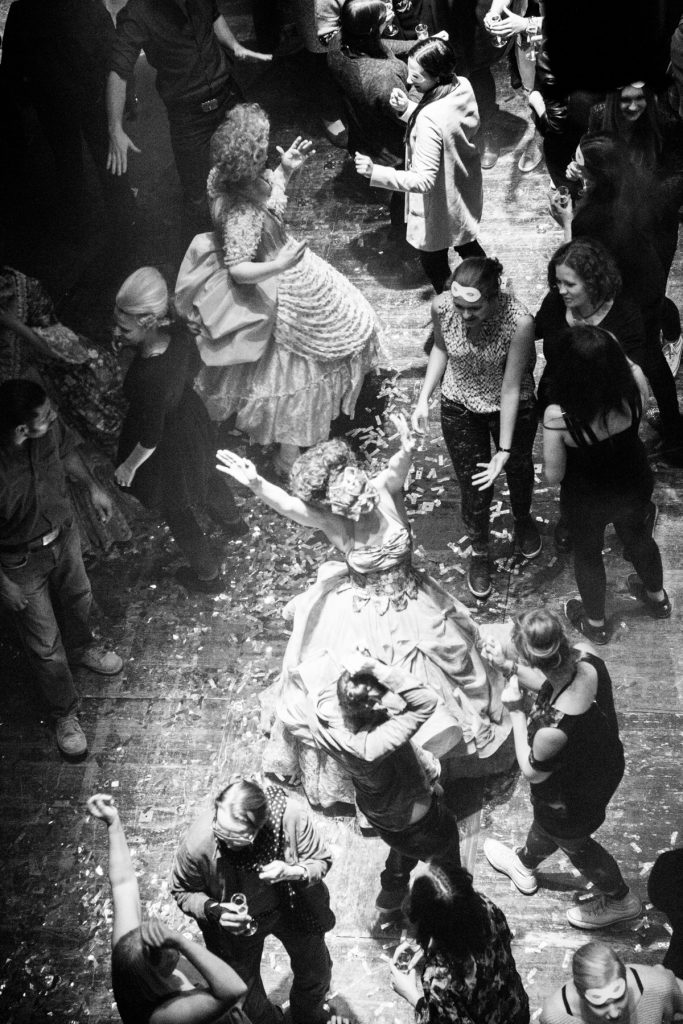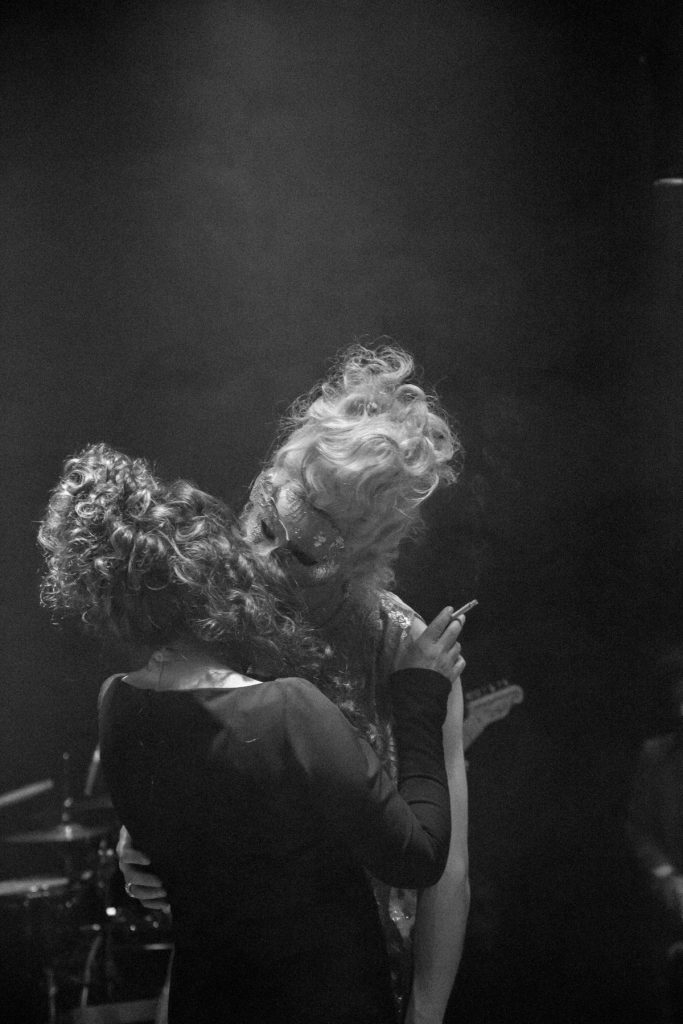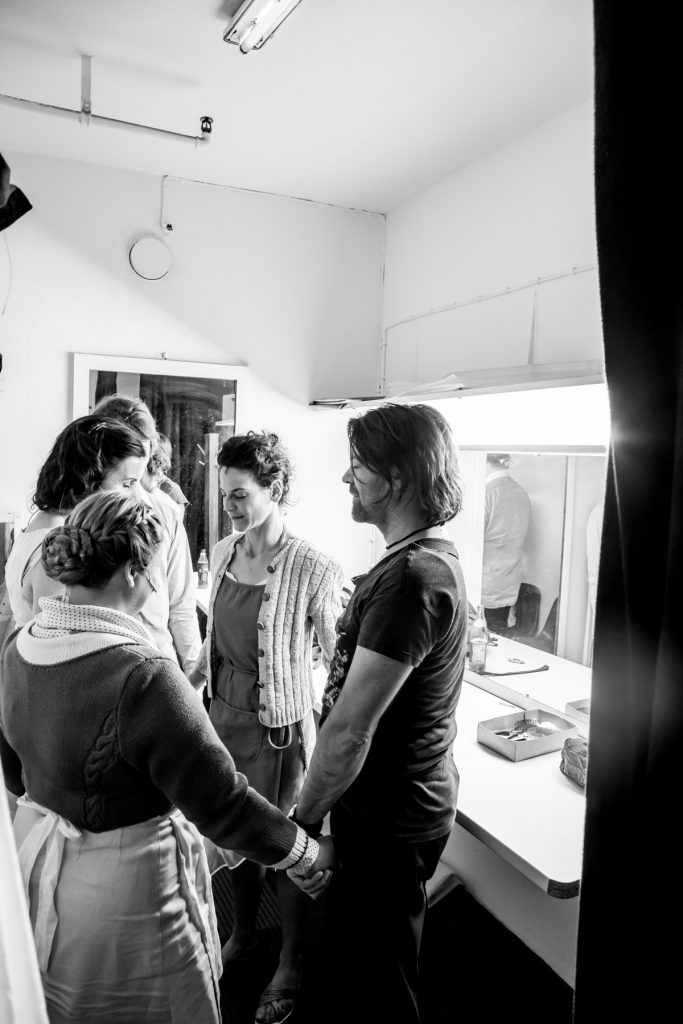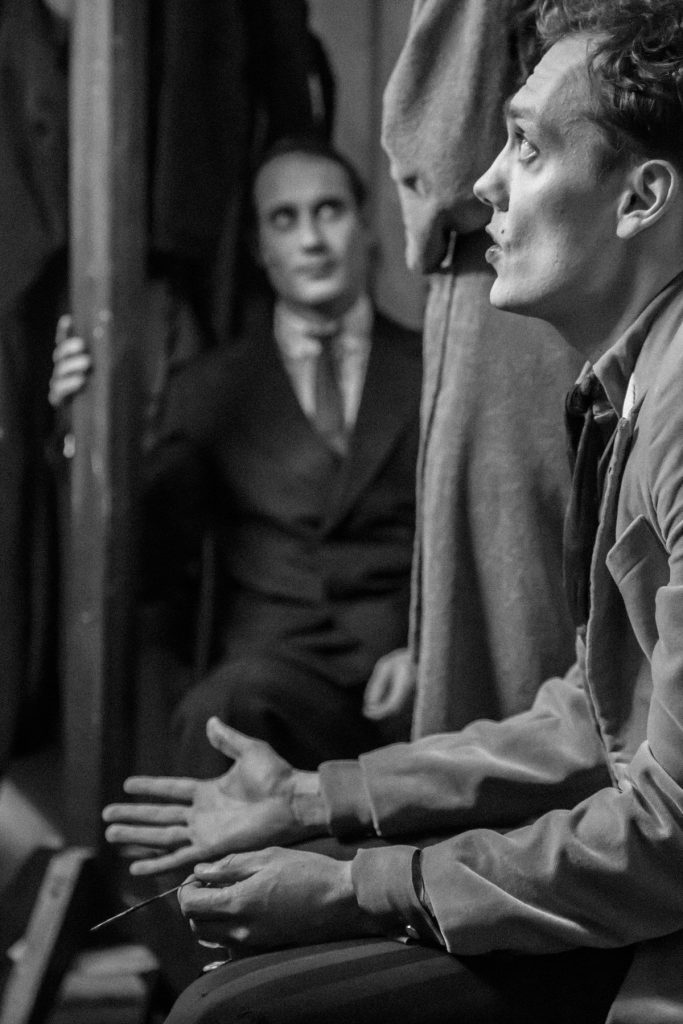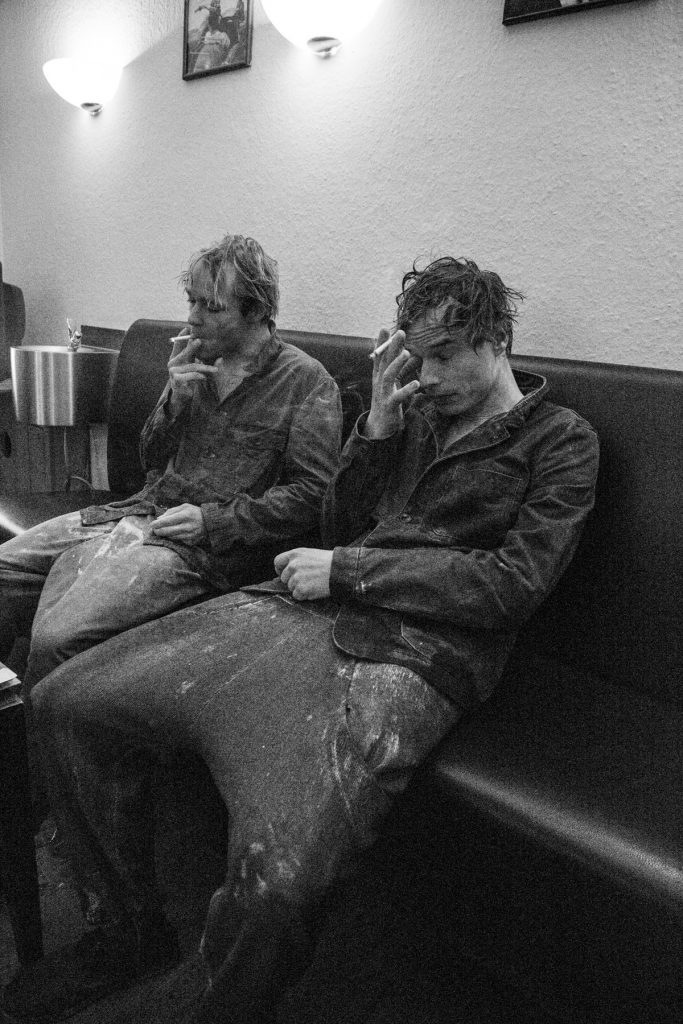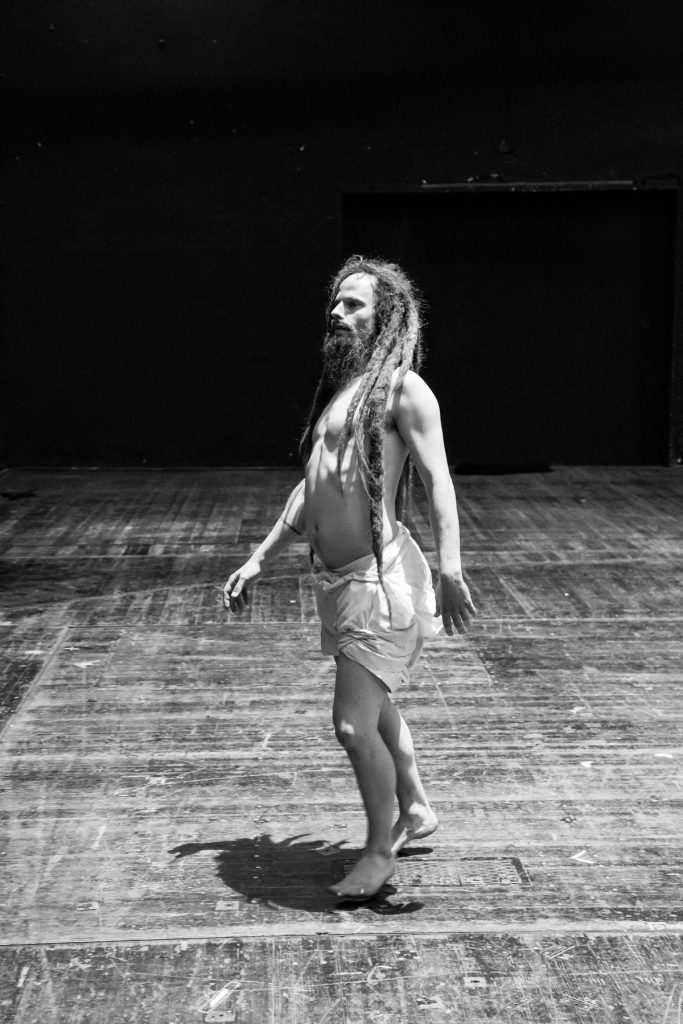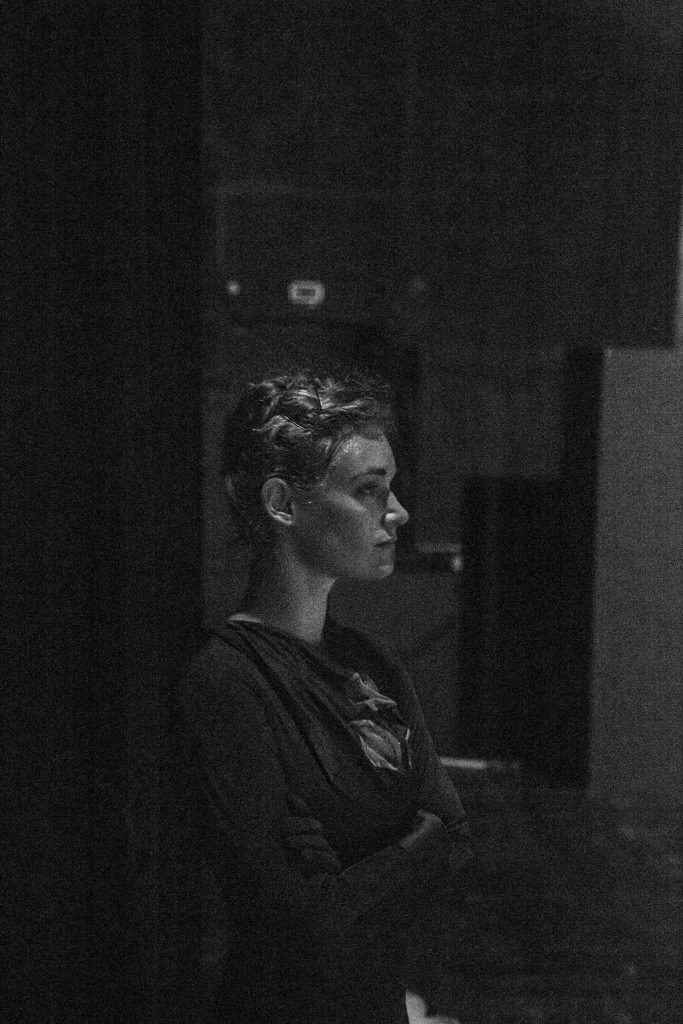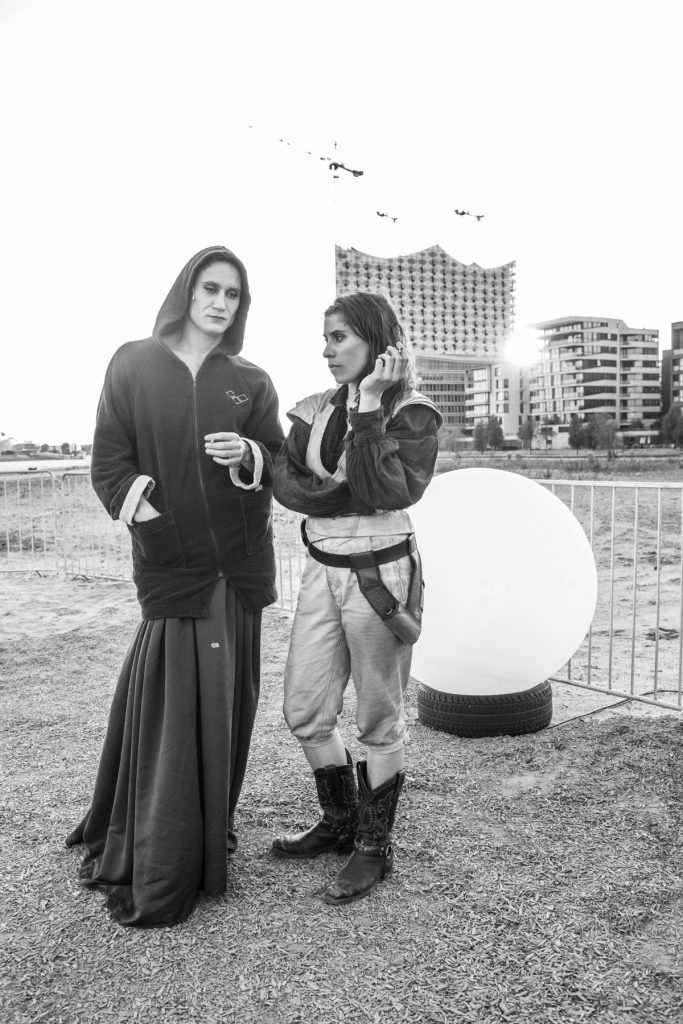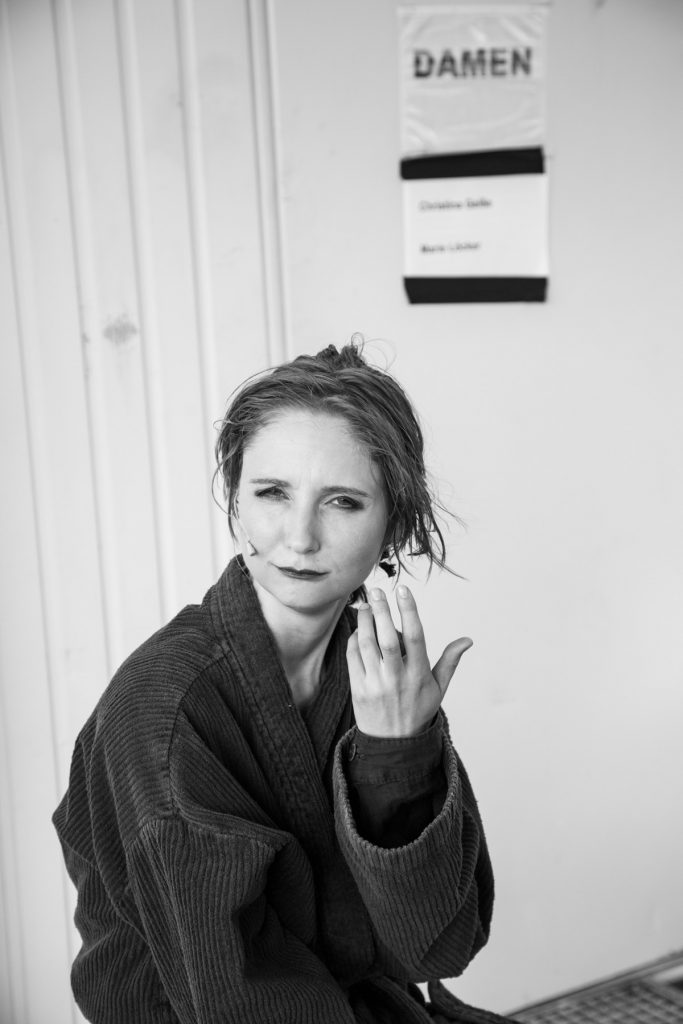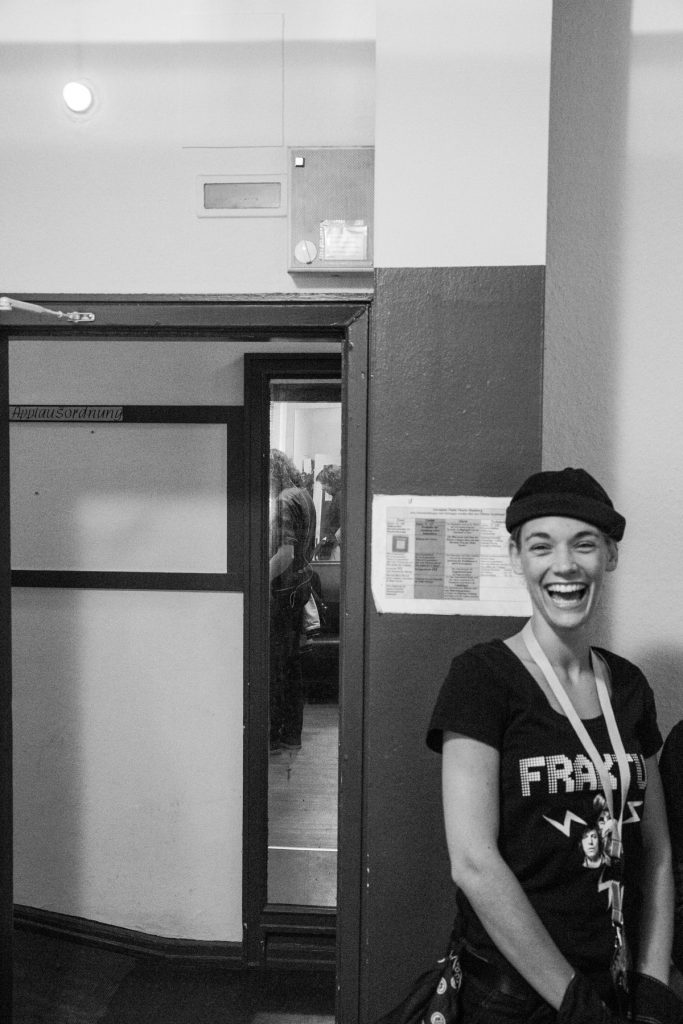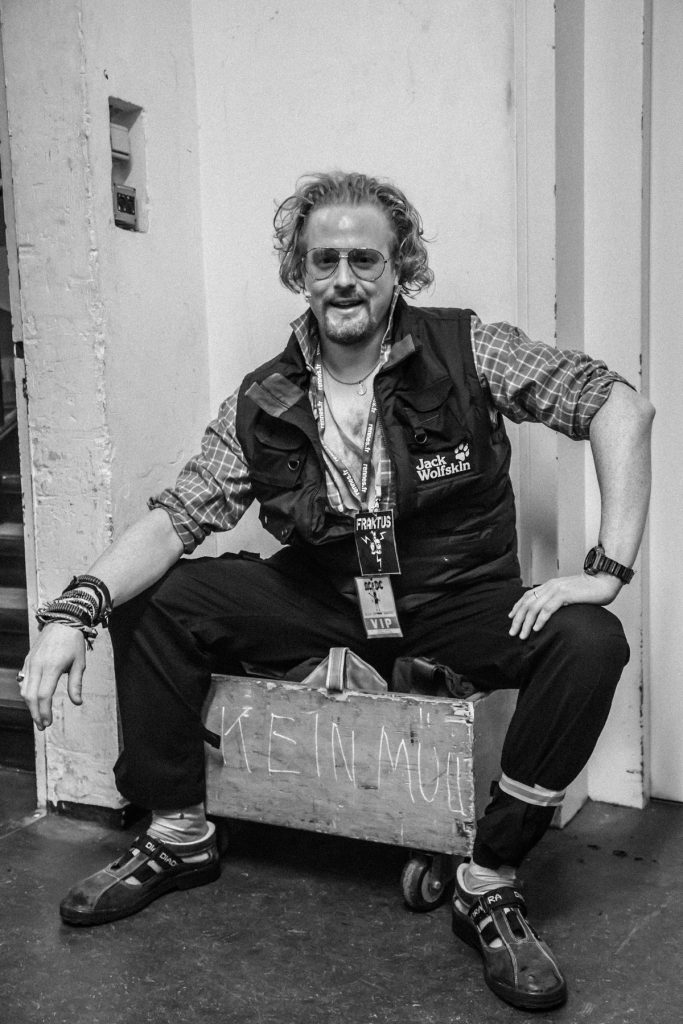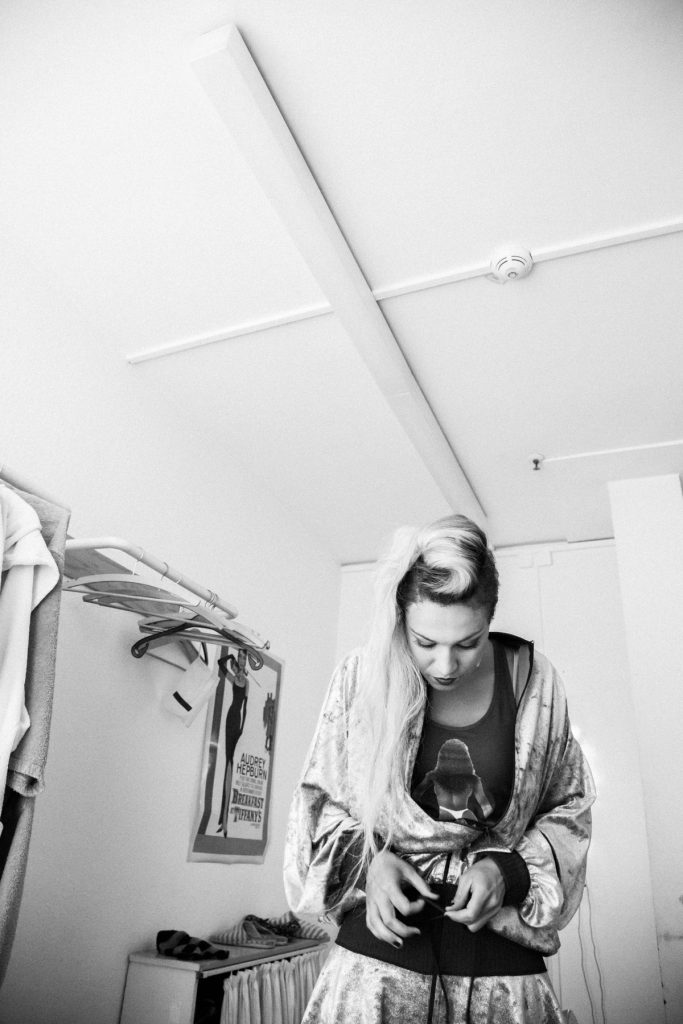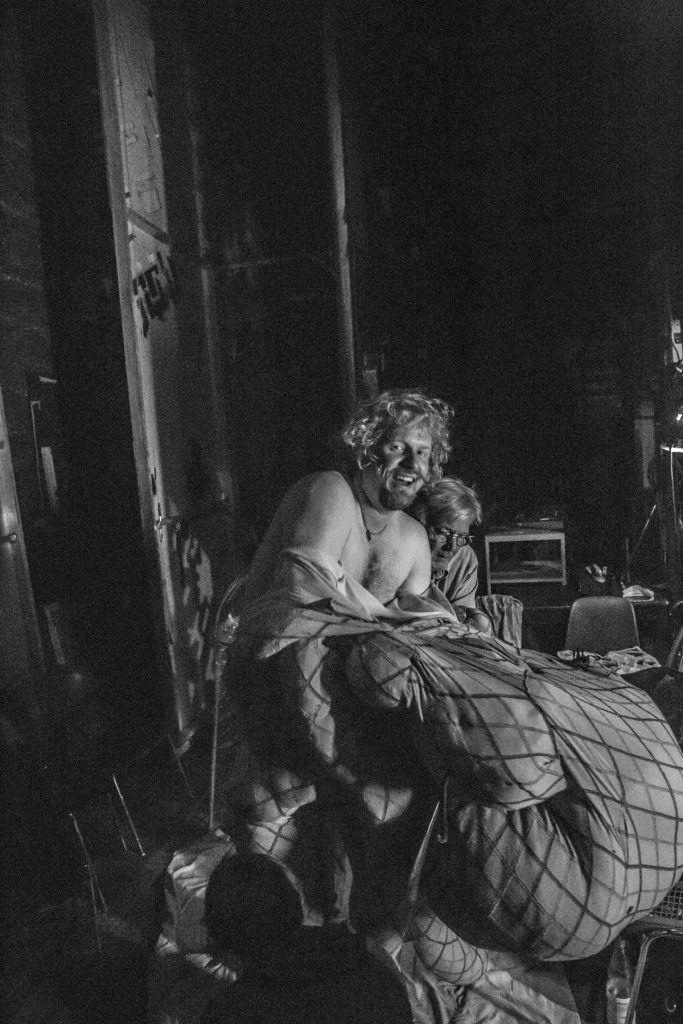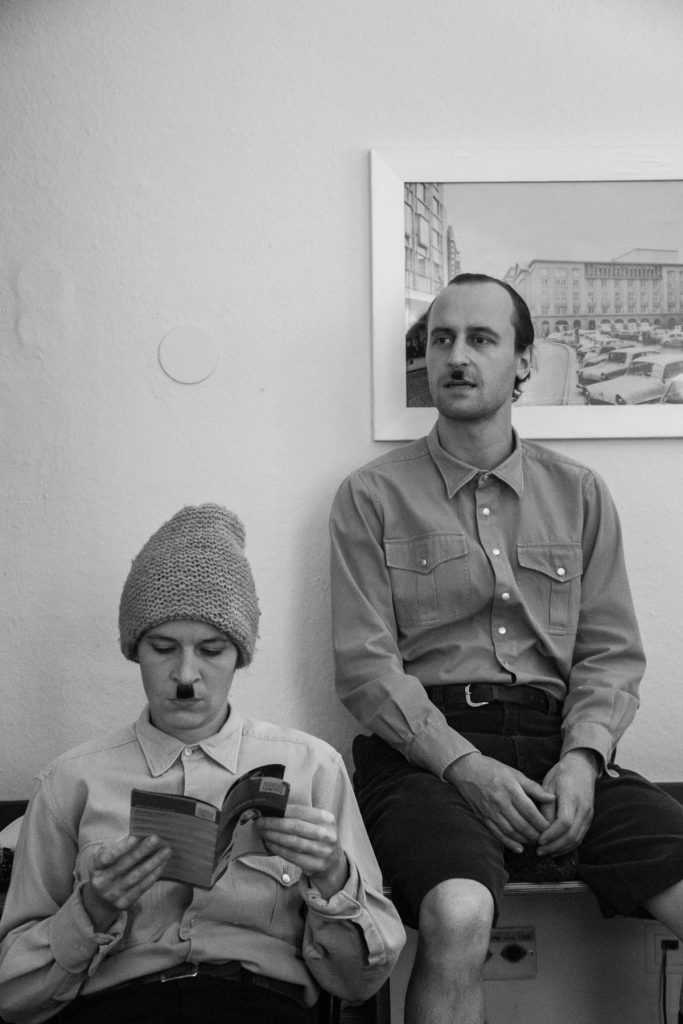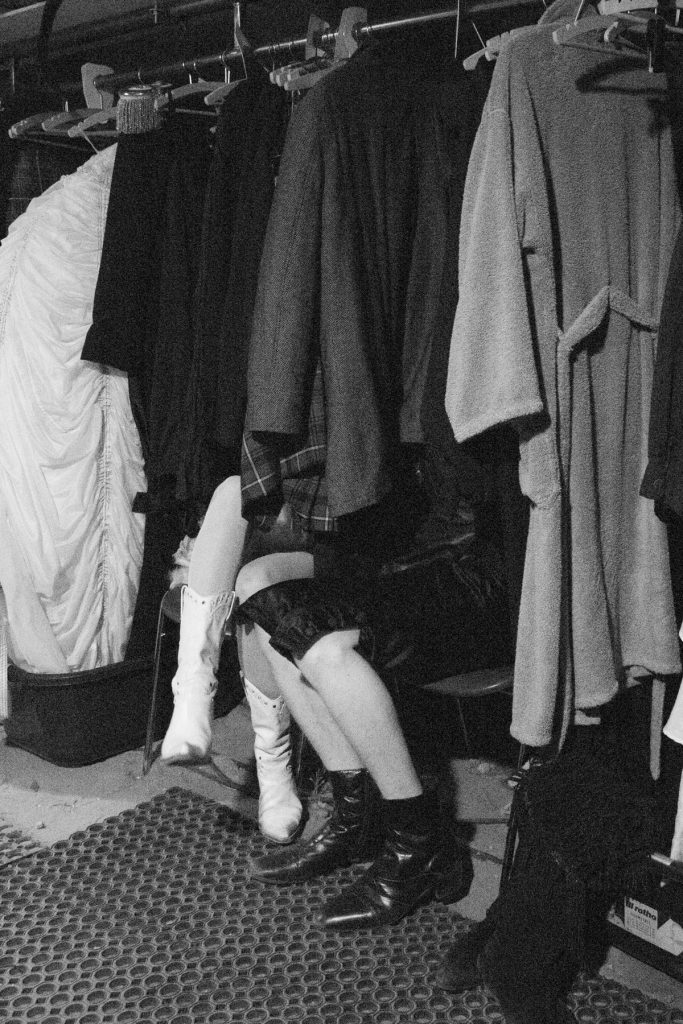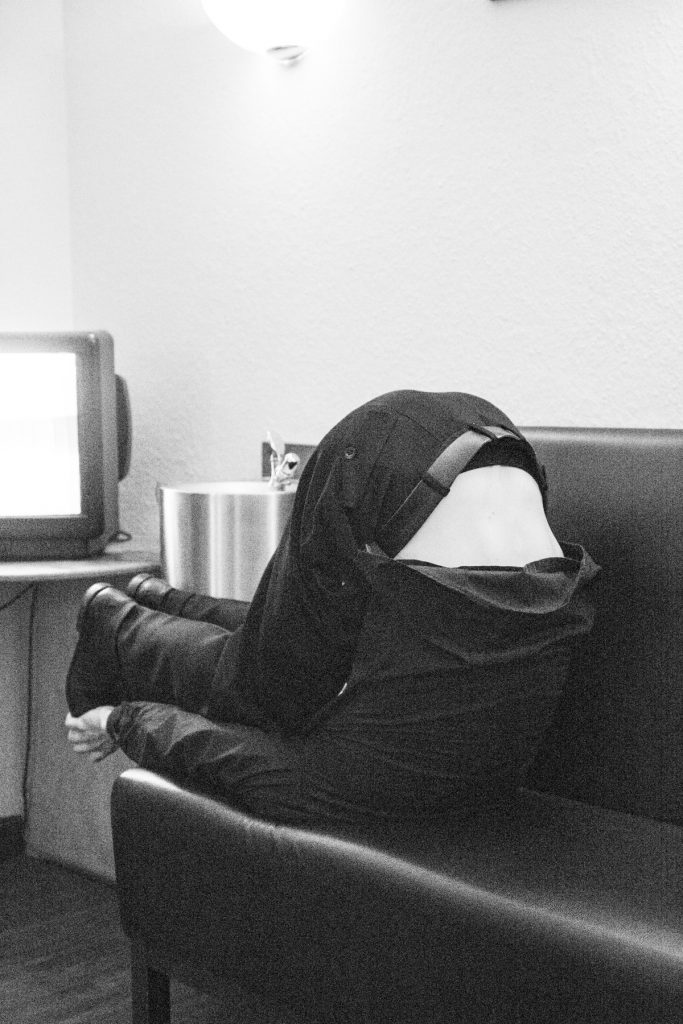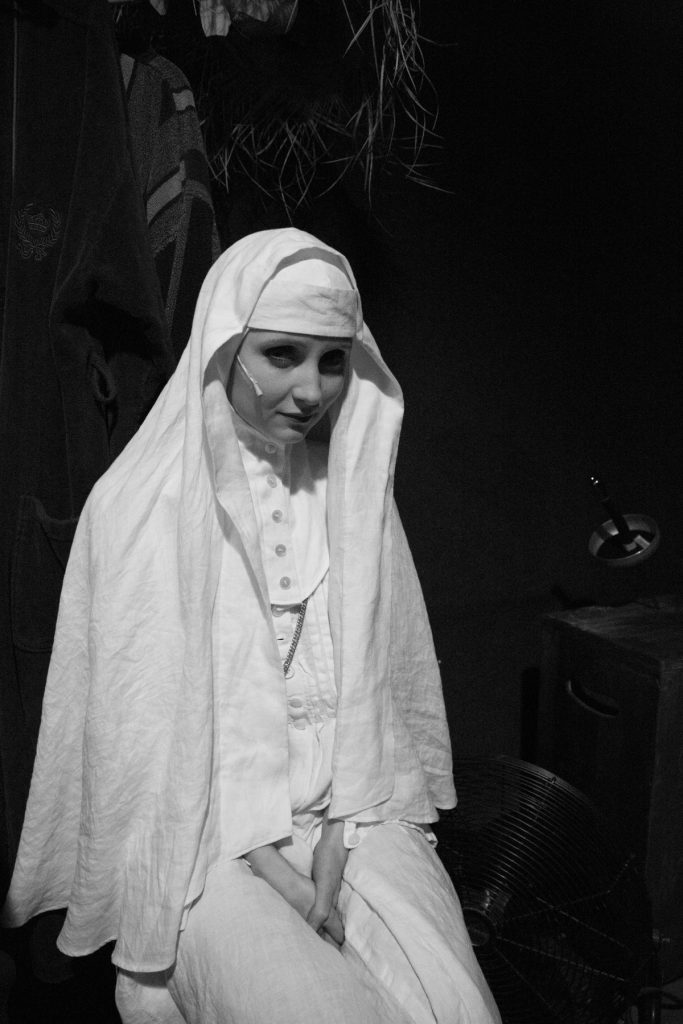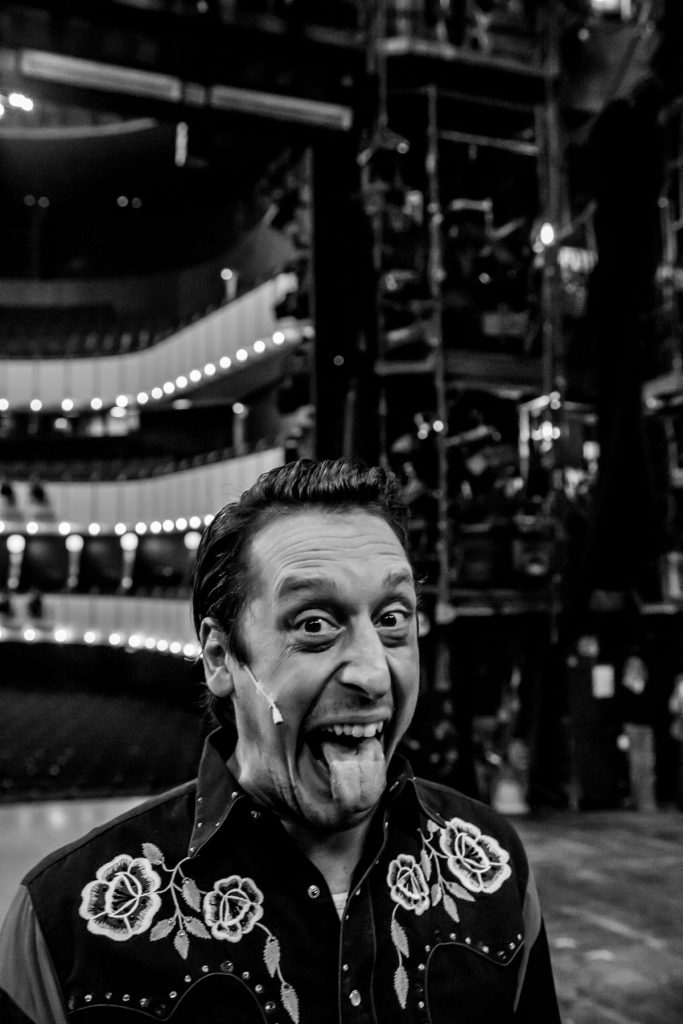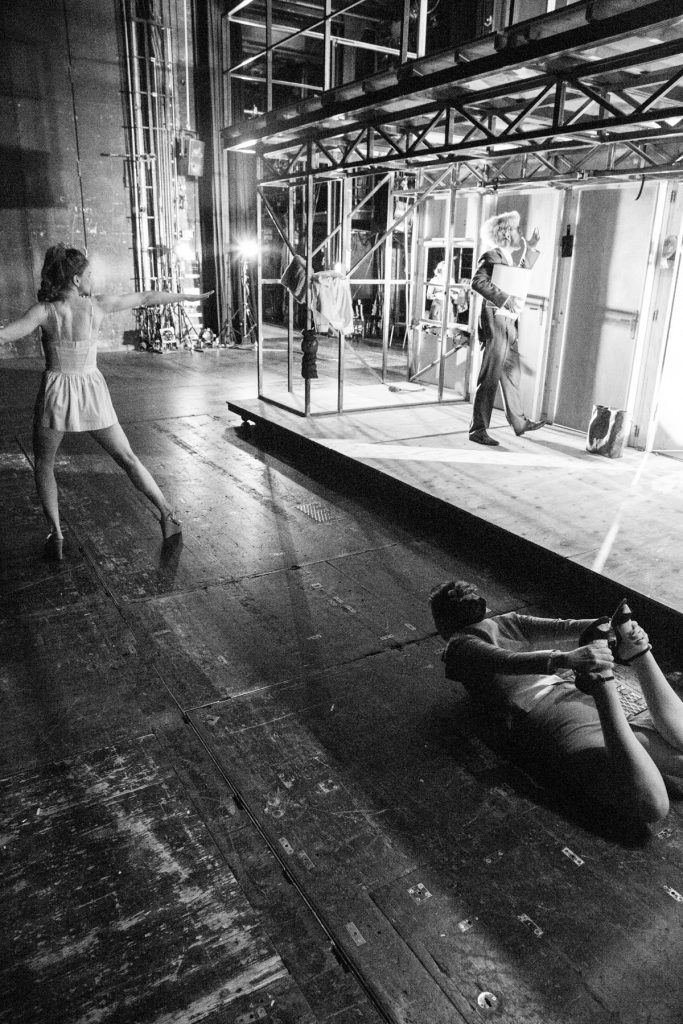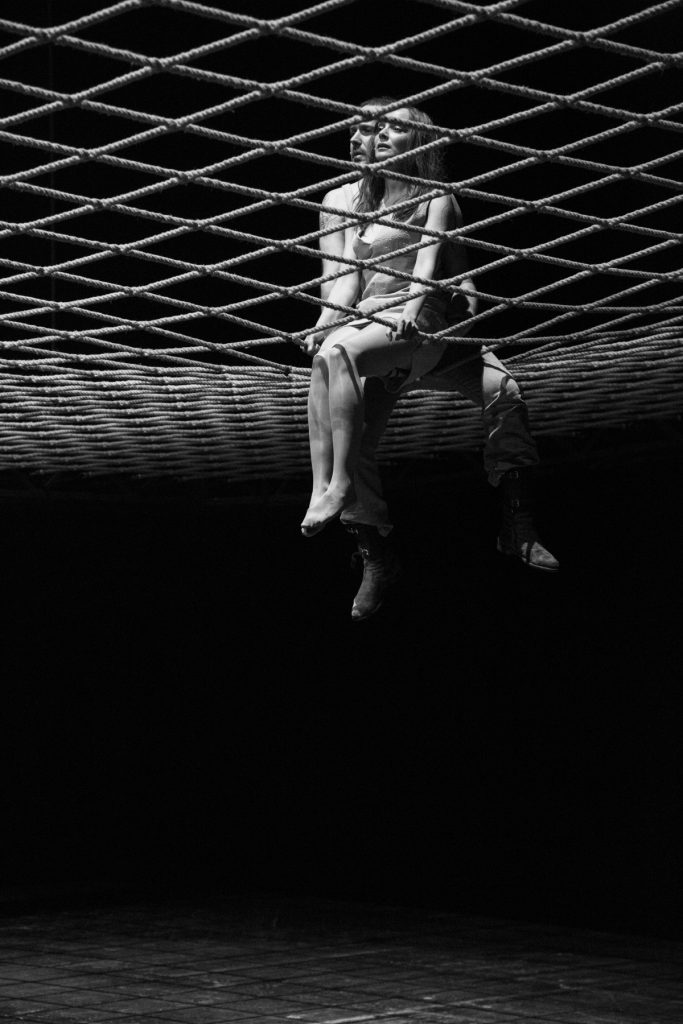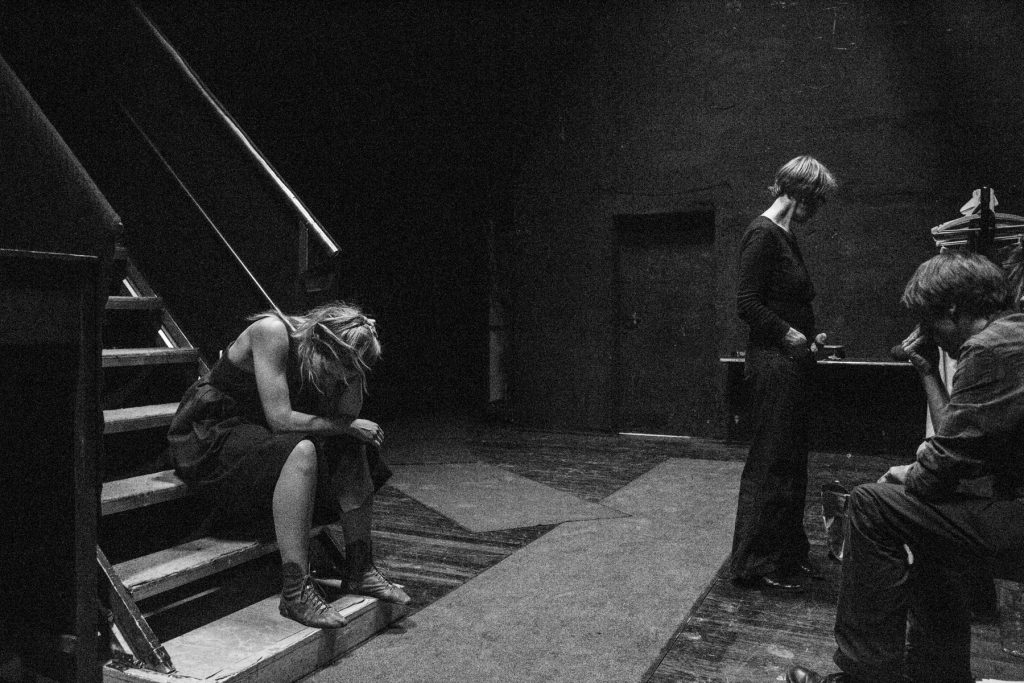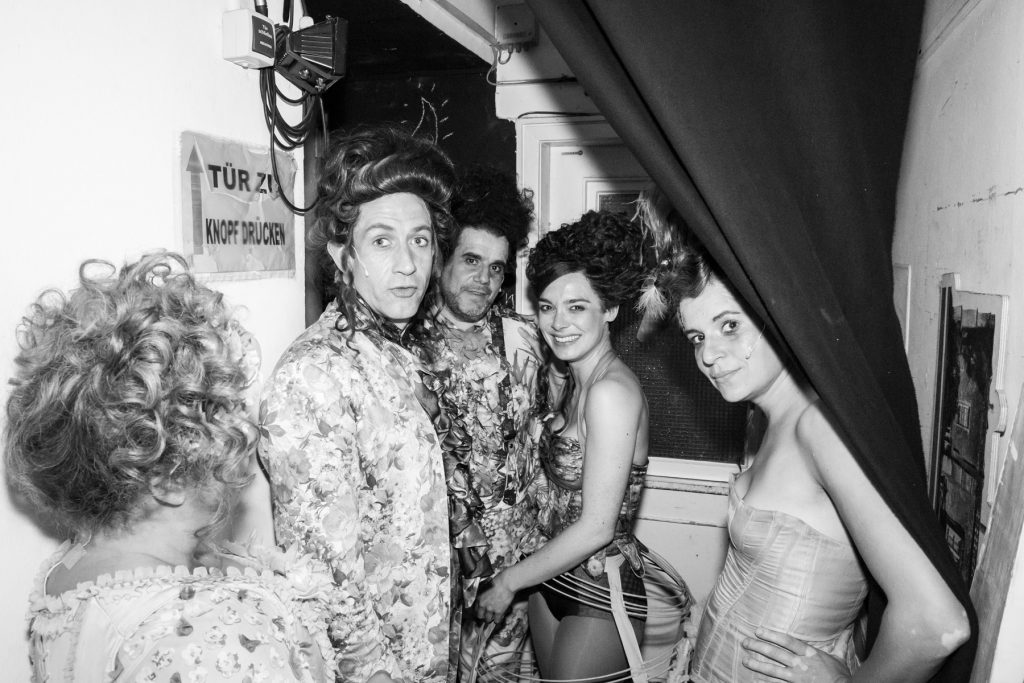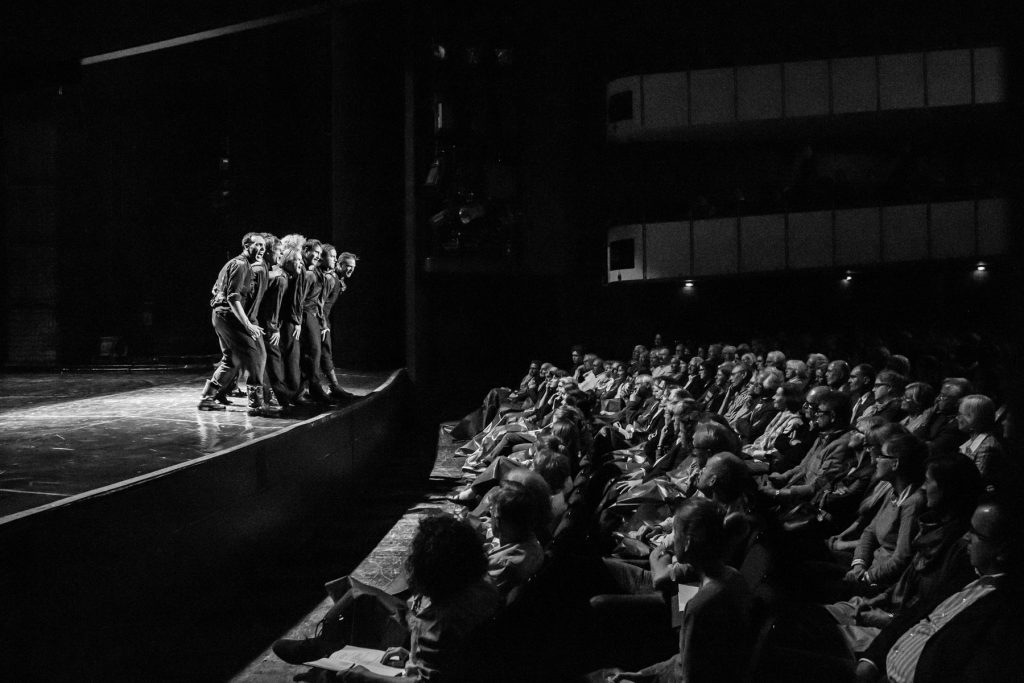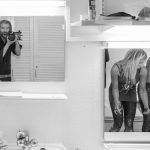
For the series with the simple title “Fotowand”, restaurateur and gallerist Tim Seidel invited photographers from Hamburg to develop a collection in collaboration with the Thalia Theater Hamburg. After Peter Hönnemann, I was also invited. The brief was to occasionally pick up the camera in conversation, in the lounge, or at the cafeteria table, to capture relaxed, private moments of the actors. But things turned out differently – very differently.
Black pants, black shirt, black shoes, sleeves down: I intended to be virtually invisible in case I had to step onto the dark stage. But within the first 30 minutes of rehearsal, I became a silent witness to the focused concentration of a small group of the ensemble in the backstage anteroom. I took two photos, slowly withdrew – and when I returned, the group moved onto the “Open Stage,” giving the audience a direct view. To my surprise, the door was held open for me. I had no business being there, yet it felt like a ceremonial welcome into the “theater circle.” The chemistry was immediate; my restraint was met with complete openness.
What started as an assignment to photograph only in the common areas quickly evolved into complete freedom: I was now allowed behind, under, and on the stage. During performances, moving through the sets, corridors, and audience seating, I could enter nearly every room. With immense trust, I was even invited into the dressing rooms. At some point, Rocko Schamoni suggested I could fit perfectly into the play Fraktus. With the words, “You already look the part; you don’t even need a costume,” I was incorporated into the production as the photographer. This meant I stood on stage multiple times – on some days even on two Thalia Theater stages simultaneously in front of sold-out houses: Fraktus in the main theater and The Three Musketeers in the harbor tent, still as the photographer, but with improvised lines. Exciting moments and a story I still love to tell.
At the time, I called my work there “photographing without light.” Especially behind, under, or beside the stage, that’s exactly how it felt. Camera, shutter speed, aperture, and ISO were constantly pushed to their limits – and I developed my own method for handling the images afterward. The files already had the aesthetic of analog photography, and when later printed on Hahnemühle Photo Rag Art Paper matte, there was no doubt for viewers that these images could have only been created on film.
The exhibition opening was a celebration: actors, theater staff, art- and photography-loving Hamburg locals, and friends filled the house. A full house – and at least one full heart.
Zur Serie mit dem schlichten Titel „Fotowand“ lud der Gastronom und Galerist Tim Seidel Fotograf:innen der Hansestadt ein, gemeinsam mit dem Thalia Theater Hamburg eine Strecke zu entwickeln. Nach Peter Hönnemann wurde auch ich berufen. Das Briefing sah vor, dass ich im Gespräch, im Konversationsraum oder an der Kantinentafel ab und an die Kamera ansetze, um entspannte, private Momente der Schauspieler:innen einzufangen. Doch es kam anders – sehr anders.
Schwarze Hose, schwarzes Hemd, schwarze Schuhe, Hemdsärmel lang: Damit wollte ich quasi unsichtbar bleiben, falls ich die dunkle Bühne betreten müsste. Doch schon in den ersten 30 Minuten der Probe wurde ich stiller Zeuge der konzentrierten Arbeit einer kleinen Ensemblegruppe im Vorraum vor der Bühne. Ich machte zwei Bilder, zog mich zurück – und als ich wiederkam, begab sich die Gruppe auf die „Offene Bühne“ – den direkten Einblick für das Publikum. Zu meinem Erstaunen wurde mir die Tür aufgehalten. Ich hatte dort nichts zu suchen, und doch fühlte sich das wie der Ritterschlag für die „Theaterrunde“ an. Die Chemie stimmte sofort; meine Zurückhaltung wurde mit grenzenloser Offenheit belohnt.
Aus der ursprünglichen Vorgabe, nur in Aufenthaltsräumen zu fotografieren, entwickelte sich schnell eine andere Freiheit: Ich durfte hinter, unter und auf die Bühne. Während der Stücke, zwischen Kulissen, Gängen und Rängen, konnte ich nahezu jeden Raum betreten. Mit großem Vertrauensvorschuss wurde ich sogar in die Umkleiden eingeladen. Irgendwann kam Rocko Schamoni auf die Idee, ich könnte gut in das Stück Fraktus passen. Mit den Worten: „Du siehst doch schon so aus, für dich braucht es nicht mal ein Kostüm“, wurde ich als Fotograf Teil der Inszenierung. So kam es, dass ich mehrmals auf der Bühne stand – an manchen Tagen sogar gleichzeitig auf zwei Thalia-Theaterbühnen vor ausverkauftem Haus: Fraktus im Haupthaus und Die drei Musketiere im Theaterzelt am Hafen, immer noch in der Rolle des Fotografen, aber mit improvisiertem Text. Aufregende Momente und eine Geschichte, die ich bis heute gerne erzähle.
Zu dieser Zeit nannte ich die Arbeit dort „Fotografieren ohne Licht“. Besonders hinter, unter oder neben der Bühne fühlte es sich oft genau so an. Kamera, Belichtungszeit, Blende und ISO wurden immer wieder an ihre Grenzen gebracht – und ich entwickelte mein eigenes Rezept, um später mit den Bildern umzugehen. Die Dateien trugen bereits die Anmutung analoger Fotografie. Beim späteren Druck auf Hahnemühle Photo Rag Artpaper matt entstand für die Betrachter:innen keinerlei Zweifel daran, dass es sich um analog entstandene Bilder handeln müsse.
Die Vernissage war ein Fest: Schauspieler:innen, Theatermitarbeiter:innen, kunst- und fotobegeisterte Hamburger:innen sowie Freunde füllten das Haus. Ein volles Haus – und mindestens ein erfülltes Herz.
